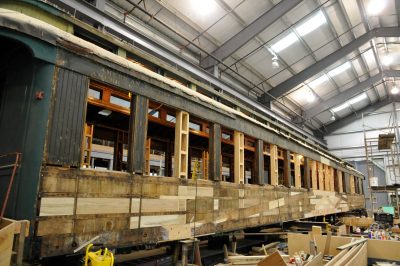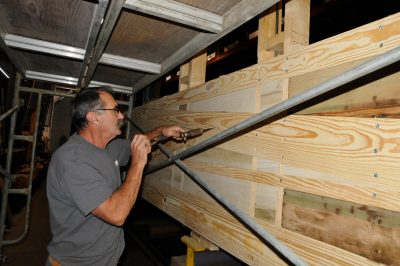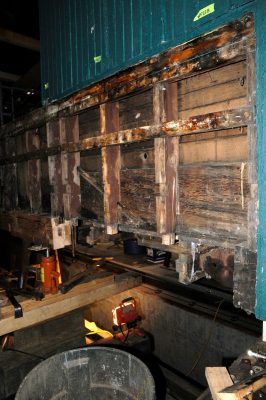
Left side sill repair began with removal of cladding, blocking, compression planks, and the damaged side sill.
Chapel car 5 Messenger of Peace has been undergoing rehabilitation for over 9 months. A full-time crew of carpenters and other preservation specialists has been reversing the effects of 112 years of deterioration and decay. Considering the car is just 78 feet long, the scope is massive. Frame repairs, new or repaired exterior cladding, new windows, repaired interior paneling and new trucks are just a few of the work categories underway. And to undertake the work, wood species were identified and replacement material sourced, fasteners duplicated, and cutting jigs prepared.
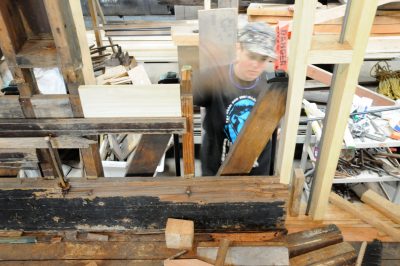
Meg G. begins installing bracing in the new side sill. A missing section of the truss plank evidenced in the foreground will be spliced in. The truss plank is made from Douglas fir and was the only Northwest wood used in the 1898 construction.
The most intensive aspect of the rehabilitation project is the frame (side sill) repairs, including the replacement of over 60 feet of sill material, 16 feet on the right side and over 45 feet on the left. This work required the car to be extensively jacked and blocked up to restore it to its original profile. The roof and walls were supported with false work installed in the car’s interior and supported by the center sill.
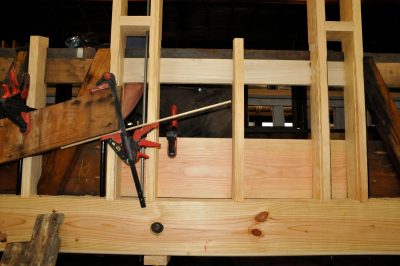
New section of truss plank mentioned in previous photo caption is shown in place along with new section of side sill.
Work began with removal of the exterior cladding and the underlying blocking. Braces, ties rods and compression trusses were removed to provide access to the side sill. New sections of sill were created while the southern yellow pine timbers were supported by sawhorses. After machining window post mortises, holes for tie rods, and a rabbet for the truss plank, the sill was installed. Then the real work began: installing window posts, fitting the compression and auxiliary compression planks, reinstalling the belt rail, and fitting and installing old and new blocking. Months of work later, the car superstructure is back together again and it can support the car’s weight. With this category of work completed, the car has also had its “camber” restored to a condition not seen for more than 60 years.
The chapel car rehabilitation will be continuing into 2012. Work is being funded by Save America’s Treasures, Washington State Heritage Capital Projects Fund
administered by the Washington State Historical Society, 4 Culture, the National Trust for Historic Preservation and American Express.

